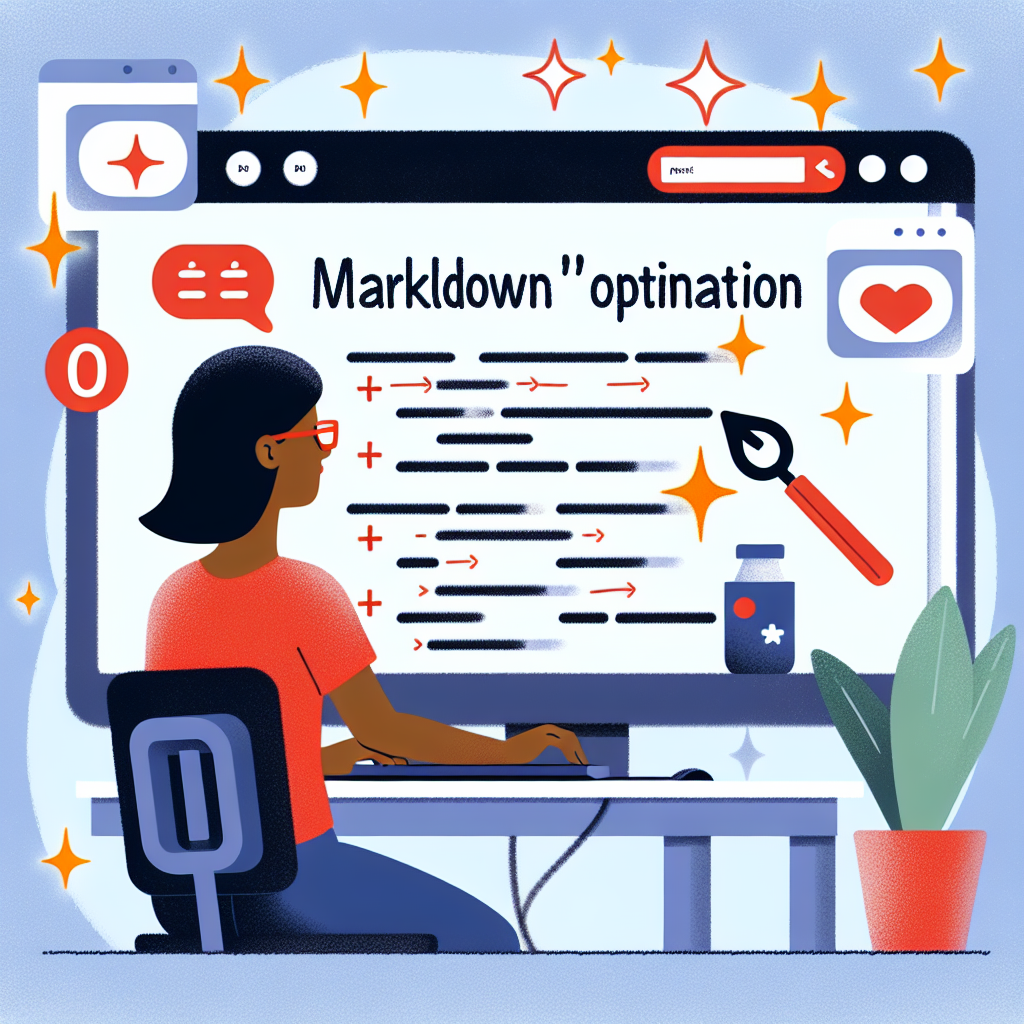Markdown Optimization: Enhancing Document Formatting and Readability
Markdown is a lightweight markup language known for its simplicity and power. This article explores techniques like headings, lists, tables, and images, and recommends editors and plugins to enhance document quality.

"Why struggle with Markdown formatting? Our free tools make it easy to create beautiful, professional-looking documents in seconds."
Markdown is a lightweight markup language that is beloved by developers and content creators for its simple syntax and powerful features. To ensure that your documents perform better in various environments, it is essential to master some Markdown optimization techniques. In this article, we will explore how to improve the quality and readability of Markdown documents through content organization, formatting, and the use of tools.
Content Organization
Good content organization is the cornerstone of creating high-quality Markdown documents. Here are some best practices for organizing content:
1. Use Hierarchical Headings
Ensure that you use different levels of headings (such as #, ##, ###, etc.) to divide the structure of your document. This helps readers quickly browse and understand the content.
# Main Heading
## Subheading
### Sub-subheading
2. Create a Table of Contents (TOC)
For longer documents, generating a Table of Contents (TOC) can significantly improve navigation. In Markdown, you can either create a TOC manually or use a plugin to generate it automatically.
## Table of Contents
- [Introduction](#introduction)
- [Content Organization](#content-organization)
- [Content Optimization](#content-optimization)
- [Tool Recommendations](#tool-recommendations)
Content Optimization
Optimizing your writing content makes the document more readable and informative. Here are some tips:
1. Use Lists and Tables
Utilize ordered and unordered lists to organize information, making it easy to read. Tables can be used to present structured data.
- Unordered item 1
- Unordered item 2
1. Ordered item 1
2. Ordered item 2
| Header1 | Header2 |
| ------- | ------- |
| Data1 | Data2 |
2. Emphasis and Blockquotes
Use emphasis (like bold and italic) to highlight key content, and blockquotes to quote important or relevant paragraphs.
This is **bold** text.
This is *italic* text.
> This is a blockquote, which can be used to emphasize quotes or significant information.
3. Embed Code and Images
Markdown supports embedding code blocks and images, making technical documents and tutorials more intuitive.
```python
print("Hello, World!")
 ## Tool Recommendations
## Tool Recommendations
Effective use of tools can greatly enhance the efficiency and quality of working with Markdown. Here are some recommended tools and plugins:
1. Markdown Editors
Choose a powerful Markdown editor like Visual Studio Code, Typora, or Atom. These editors offer rich plugins and extensions that enhance the Markdown editing experience.
2. Markdown Plugins
Make use of Markdown plugins to extend its functionality, such as Markdown Preview Enhanced for real-time preview and chart support, and Markdown All in One for shortcuts and table generation features.
3. Online Tools
Utilize online tools like Dillinger and StackEdit to edit and preview Markdown documents anywhere, with support for multi-platform synchronization.
Conclusion
By following good content organization and optimizing your writing methods, combined with the use of powerful tools and plugins, you can significantly enhance the formatting and readability of Markdown documents. This not only makes your documents more professional and readable but also improves the reader's experience, effectively conveying your information.
I hope this article helps you understand and apply Markdown optimization better. If you have any questions or need further advice, please feel free to let me know!



Comments ()